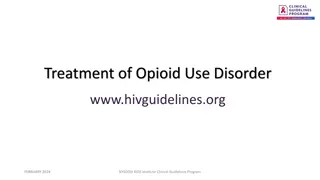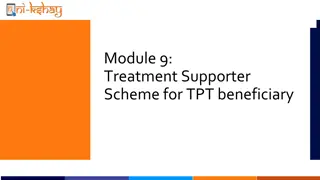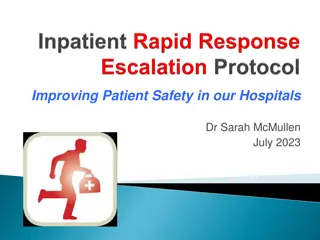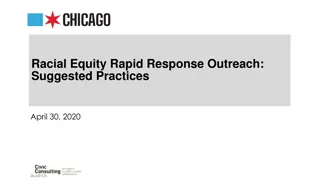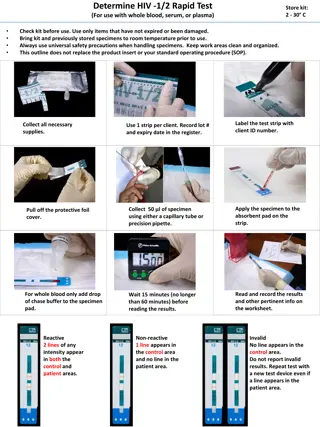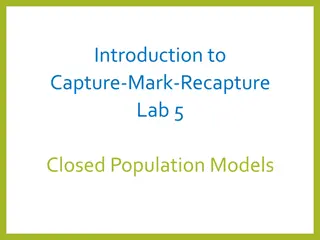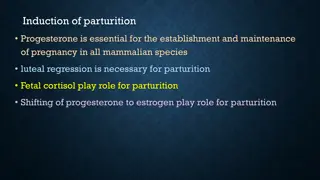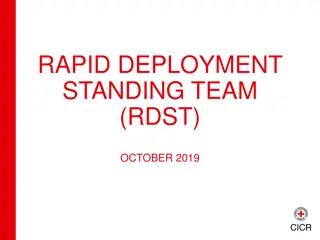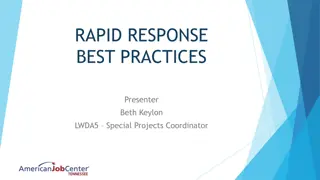Secukinumab Retreatment Shows Rapid Recapture of Treatment Response
This study analyzed the efficacy of secukinumab retreatment in patients with psoriasis, demonstrating rapid restoration of treatment response within 16 weeks. The safety profile was consistent, suggesting secukinumab as a viable option for this patient population. Results of the extension study from ERASURE and FIXTURE phase 3 trials are discussed, highlighting the significance of secukinumab retreatment after treatment interruption.
Download Presentation

Please find below an Image/Link to download the presentation.
The content on the website is provided AS IS for your information and personal use only. It may not be sold, licensed, or shared on other websites without obtaining consent from the author.If you encounter any issues during the download, it is possible that the publisher has removed the file from their server.
You are allowed to download the files provided on this website for personal or commercial use, subject to the condition that they are used lawfully. All files are the property of their respective owners.
The content on the website is provided AS IS for your information and personal use only. It may not be sold, licensed, or shared on other websites without obtaining consent from the author.
E N D
Presentation Transcript
Secukinumab Retreatment Shows Rapid Recapture of Treatment Response: An Analysis of a Phase 3 Extension Trial in Psoriasis https://www.aad.org/eposters/Submissions/getFile.aspx?id=4879&type=sub
Summary & Importance Secukinumab retreatment restored efficacy within 16 weeks The safety profile of secukinumab was consistent with previous reports Treatment interruption is common in patients with psoriasis and may lead to diminished efficacy upon retreatment The results suggest secukinumab may be a good option in this challenging population
Study Design and Methods This analysis reports results from the extension phase of the ERASURE and FIXTURE phase 3 studies In the ERASURE and FIXTURE studies, patients were randomized equally to secukinumab 150 mg or 300 mg or placebo There was a fourth arm in the FIXTURE study in which patients received etanercept 50 mg Treatment was administered at baseline, weeks 1, 2, 3, and 4, then every 4 weeks. At week 12, placebo patients who did not achieve a PASI-75 response were randomized to secukinumab 150 mg or 300 mg.
Study Design and Methods (cont) Patients who had PASI-75 responses at week 52 were randomized in the extension study 2:1 to continue on the same dose of secukinumab or to receive placebo every 4 weeks Patients who relapsed in the placebo arms of the 2 studies were retreated with secukinumab at weeks 0, 1, 2, 3, 4, and then every 4 weeks Relapse was defined as a loss of >50% of the maximum PASI gain compared with baseline in the ERASE and FIXTURE studies
Study Design and Methods (cont) This analysis is limited to patients who had a good response to secukinumab (they were required to have a PASI-75 response), were then switched to placebo to create active treatment withdrawal, and were then restarted on secukinumab once they had relapsed
Results Summary 181 patients were included in this treatment response, then treatment withdrawal, then treatment restart group 136 of the 181 patients (75.1%) relapsed upon treatment withdrawal at a median of 28 weeks and were subsequently retreated with secukinumab These patients had a PASI-75 score at 52 weeks In these 136 patients, 93.8% achieved a PASI-75 response at 16 weeks following initiation of retreatment with secukinumab
Results Summary (cont) In the patients who had a PASI-90 at 52 weeks, 95.8% had a PASI-75 at 16 weeks following initiation of retreatment and 78.8% had a PASI-90 In the patients who had a PASI-100 at 52 weeks, 67.3% had a PASI-100 at 16 weeks following initiation of retreatment In the retreated patients, the mean exposure to secukinumab per patient was 202.2 days Adverse events were consistent with previous studies and presented no unexpected safety findings
Faculty Commentary It is striking that 25% of the patients never relapsed suggesting that the nature of the disease was modified by treatment with secukinumab In those who did relapse following withdrawal of secukinumab, the median time to relapse was 28 weeks
Safety and Efficacy of Apremilast Through 104 Weeks in Patients with Moderate to Severe Psoriasis Who Continued on Apremilast or Switched from Etanercept Treatment in the LIBERATE Study https://www.aad.org/eposters/Submissions/getFile.aspx?id=5436&type=sub
Summary In biologic-na ve patients with moderate-to-severe psoriasis, apremilast demonstrated significant efficacy compared to placebo from week 16 through week 104 Efficacy was maintained in patients switched from etanercept to apremilast Safety profile of apremilast was as expected
Importance Many medications for moderate-to-severe plaque psoriasis are limited by adverse events, safety, tolerability, or route of administration Orally administered apremilast may be an important alternative
Study Design and Methods The LIBERATE study is a randomized, placebo-controlled, multicenter phase 3b study LIBERATE involved biologic-na ve patients with chronic moderate-to-severe plaque psoriasis as demonstrated by: Psoriasis Area and Severity Index score 12 Static Physician s Global Assessment score 3 Body surface area involvement 10% Patients were those who had an inadequate response, intolerance, or contraindication to at least 1 conventional systemic agent
Study Design and Methods (cont) Patients were randomized 1:1:1 to Etanercept 50 mg once weekly Apremilast 30 mg twice daily or Placebo At 16 weeks Apremilast patients continued treatment Etanercept and placebo patients switched to apremilast 30 mg twice daily Treatment was continued through week 104 Starting at week 32, all nonresponders (<PASI-50) had the option of adding topical therapies and/or UV-B phototherapy
Results Summary 250 patients with a mean PASI score of 19-20 at baseline were randomized Mean duration of psoriasis ranged from 16.6 to 19.7 years A PASI-75 score at week 16 was achieved in 39.8% of apremilast patients (P<0.0001 vs placebo) 48.2% of etanercept patients (P<0.0001 vs placebo) 11.9% of placebo patients A PASI-75 score at week 104 was achieved in 45.9% to 51.9% of patients
Results Summary (cont) At week 16, a minimally clinically important difference in the Dermatology Life Quality Index was achieved in 65.1% of apremilast patients (P=0.0032 vs placebo) 65.1% of etanercept patients (P=0.0032 vs placebo) 41.7% of placebo patients Responses in the apremilast and etanercept/apremilast groups were maintained through week 104
Results Summary (cont) Among patients with at least moderate scalp involvement at baseline, significantly more patients treated with apremilast or etanercept than placebo achieved a response of clear or almost clear at week 16 The response was maintained or improved through week 104 Similar findings were observed with respect to improvement in nail psoriasis The incidences of adverse events were similar among the 3 groups from weeks 16 through 104, occurring in approximately two-thirds of patients Diarrhea was the most frequent adverse event in each group
Faculty Commentary At week 16, 48% of etanercept patients and 40% of apremilast patients achieved PASI 75 Scalp psoriasis improved slightly more than body psoriasis Improvement in nail psoriasis is slower Switching to apremilast result in continued improvement, except in the etanercept group, which maintained response
Faculty Commentary (cont) Patients treated with apremilast for the 104 weeks of the study experienced a lower rate of diarrhea The reason(s) for this is unclear
Efficacy of Guselkumab Within Specific Body Regions in Patients with Moderate- to-Severe Plaque Psoriasis: Results from the Phase 3 VOYAGE I Study https://www.aad.org/eposters/Submissions/getFile.aspx?id=4768&type=sub
Summary & Importance One-year treatment with guselkumab is significantly better than adalimumab in treating regional disease of the scalp, nails, hands, and/or feet in patients with moderate-to-severe psoriasis Psoriasis typically involves the scalp, nails, hands, and/or feet Troubling to patients Particularly difficult to treat
Study Design and Methods VOYAGE 1 was a phase 3, randomized, double-blind, placebo- controlled, multicenter, active comparator study in patients with moderate-to-severe plaque psoriasis Patients were randomized 1:2:2 to: Placebo at weeks 0, 4, and 12 followed by crossover to guselkumab 100 mg at weeks 16 and 20, then every 8 weeks through week 44 Guselkumab 100 mg at weeks 0 and 4, then every 8 weeks through week 44 Adalimumab 80 mg at week 0, 40 mg at week 1, then 40 mg every 2 weeks through week 47
Results Summary 837 patients with a mean duration of psoriasis of 17.5 years were randomized 20.9% had been treated with a biologic 78.1% had moderate-to-severe scalp disease 55.8% had moderate-to-severe fingernail disease 58.0% had moderate-to-severe hands and/or feet disease
Results Summary The proportion of patients who achieved a score of absence of disease or very mild disease and 2 grade improvement in the scalp-specific Investigator s Global Assessment score from baseline at week 16 was 83.4% for guselkumab 70.3% for adalimumab 14.5% for placebo Significantly more patients treated with guselkumab than adalimumab achieved this same endpoint at weeks 24 and 48
Results Summary (cont) The proportion of patients who achieved a fingernail Physicians Global Assessment score of clear or minimal from baseline at week 16 was 39.1% for guselkumab 50.9% for adalimumab 15.9% for placebo At week 24, a similar proportion of patients treated with guselkumab as adalimumab achieved this endpoint
Results Summary (cont) At week 48, a fingernail Physicians Global Assessment score of clear or minimal was achieved by 74.7% of patients treated with guselkumab (P=0.038) 61.8% of patients treated with adalimumab The mean percent improvement from baseline in the Nail Psoriasis Severity Index at week 16 was significantly greater with guselkumab and adalimumab than placebo There was no difference between guselkumab and adalimumab at weeks 24 or 48
Results Summary (cont) The proportion of patients who achieved a score of clear or almost clear and 2 grade improvement in the hands and/or feet Physician s Global Assessment score from baseline at week 16 was 73.3% for guselkumab 55.8% for adalimumab 14.0% for placebo At weeks 24 and 48, significantly more patients treated with guselkumab than adalimumab achieved this same endpoint
Results Summary (cont) At week 48: Guselkumab Adalimumab Adverse event 73.9% 74.5% Serious adverse event 4.9% 4.5% Nasopharyngitis Infection requiring antibiotic treatment 25.2% 16.4% 22.2% 18.0%
Secukinumab Provides Faster and More Sustained 52-week Complete Relief from Psoriasis-Related Pain, Itching, and Scaling than Ustekinumab in Subjects with Moderate to Severe Plaque Psoriasis https://www.aad.org/eposters/Submissions/getFile.aspx?id=4449&type=sub
Safety & Importance In the CLEAR study, significantly more patients with moderate-to- severe treated with secukinumab than ustekinumab achieved and sustained complete relief of patient-reported outcomes of pain, itching, and scaling The results of these patient-reported outcomes are consistent with the efficacy results reported in the CLEAR study
Study Design and Methods CLEAR was a phase IIIb study comparing the efficacy and safety of secukinumab 300 mg with ustekinumab per label in adults with moderate-to-severe plaque psoriasis This analysis compared the effect of secukinumab versus ustekinumab over 52 weeks on patient-reported outcomes of psoriasis-related Pain Itching Scaling Assessments were carried out at weeks 1, 2, 3, 4, 8, 12, 16, 20, 24, 28, 48, 52 using the numeric rating scale (0-10)
Results Summary There were 336 patients in the secukinumab group and 339 in the ustekinumab group On a scale from 0 to 10, mean scores at baseline (secukinumab vs ustekinumab) were Pain: 4.0 vs 3.8 Itching: 6.3 vs 6.3 Scaling: 6.5 vs 6.5
Results Summary (cont) Patients treated with secukinumab achieved significantly greater mean reductions in psoriasis-related pain, itching, and scaling beginning as early as week 2 At week 52, mean reductions for secukinumab vs ustekinumab were Pain: -3.02 vs -2.56 (P<0.05) Itching: -4.88 vs -4.27 (P<0.05) Scaling: -5.41 vs -4.68 (P<0.05)
Results Summary (cont) At weeks 16 and 52, a significantly proportion of patients treated with secukinumab reported complete relief from psoriasis-related pain, itching, and scaling than those treated with ustekinumab
Results Summary (cont) At week 52, the proportions of patients achieving complete relief with secukinumab vs ustekinumab were Pain: 65.6% vs 55.9% (P<0.05) Itching: 46.3% vs 38.4% (P<0.05) Scaling: 52.7% vs 37.4% (P<0.01)
Faculty Commentary Consistent with improvement in erythema, scaling, and plaque thickness previously reported in the CLEAR study, this analysis showed corresponding improvement in patient- reported outcomes of pain, itching, and scaling
Efficacy and Safety of Ixekizumab for the Treatment of Moderate-to-Severe Plaque Psoriasis: Results Through 108 Weeks of a Randomized, Phase III Clinical Trial (UNCOVER-3) https://www.aad.org/eposters/Submissions/getFile.aspx?id=4376&type=sub
Summary Efficacy of ixekizumab was maintained over 2 years of treatment Ixekizumab resulted in high rates of skin clearance in patients with moderate-to-severe plaque psoriasis Safety profile of ixekizumab was comparable to shorter treatment periods.
Importance Since long-term treatment is usually required to maintain adequate disease control in moderate-to-severe plaque psoriasis, the long- term efficacy and safety with ixekizumab demonstrated in this study is reassuring.
Study Design and Methods UNCOVER-3 was a randomized, double-blind, multicenter, phase 3 clinical trial of ixekizumab Patients were randomized 2:2:2:1 to 12 weeks of treatment with Ixekizumab 160 mg loading dose, then 80 mg every 2 weeks Ixekizumab 160 mg loading dose, then 80 mg every 4 weeks Etanercept 50 mg twice weekly or Placebo
Study Design and Methods (cont) At week 12, patients entered an open-label extension phase Patients continued on or were switched to ixekizumab 80 mg every 4 weeks to complete a total of 108 weeks of treatment Etanercept patients had a 4-week washout period from weeks 12 to 16 At week 60, patients could increase their dose of ixekizumab to 80 mg every 2 weeks at the investigator s discretion
Results Summary 1346 patients were randomized At baseline Mean psoriasis duration was 18.1 years Psoriasis Area and Severity Index (PASI) score 20.9 Percentage of body surface area involved 28.3% At week 12, a PASI-75 score was achieved in ~90% of ixekizumab patients 55% of etanercept patients <10% of placebo patients By week 36, >90% of patients in each of the 4 groups achieved PASI-75 The rate remained stable through week 108
Results Summary (cont) In patients originally randomized to ixekizumab every 2 weeks then switched to every 4 weeks 80% achieved a PASI-90 score at week 108 56% achieved a PASI-100 score at week 108 Following week 60, 3.8% of all patients increased the ixekizumab dose to 80 mg every 2 weeks, although the majority had a PASI-75 score Increasing the dose had little effect on the overall efficacy analysis
Results Summary (cont) 84% to 85% of patients experienced one or more treatment- emergent adverse events; most were mild or moderate in severity Nasopharyngitis was the most frequent adverse event (23.5%) Upper respiratory tract infection or injection site reaction each occurred in 7.5%
Faculty Commentary Efficacy at 2 years was maintained There was a high rate of skin clearance Few patients increased their dose of ixekizumab Majority had a PASI 75 score or greater Safety was comparable to shorter-term treatment Overall, excellent maintenance of efficacy and safety with ixekizumab over 108 weeks
Psychiatric Adverse Events in Brodalumab Psoriasis Studies https://www.aad.org/eposters/Submissions/getFile.aspx?id=4908&type=sub
Summary & Importance In patients with moderate-to-severe psoriasis, anxiety and depression scores were reduced in patients treated with brodalumab Compared with placebo, patient satisfaction and quality of life were greater with brodalumab Compared with ustekinumab, suicidal ideation and behavior were similar with brodalumab Provides reassurance regarding psychiatric outcomes with brodalumab
Study Design and Methods Retrospective analysis of one phase 2 and three phase 3 trials involving brodalumab in patients with moderate-to-severe plaque psoriasis No specific exclusion criteria for psychiatric or substance abuse disorders Brodalumab was given as 140 mg or 210 mg every 2 weeks Majority were treated with the 210 mg dose by the end of the 52-week controlled period in the phase 3 studies
Study Design and Methods (cont) The Hospital Anxiety and Depression Scale (HADS) was utilized in one of the phase 3 studies All three phase 3 studies utilized the Dermatology Life Quality Index to assess the socio-psychological impact of the skin disease on patients lives Data on psychiatric events were pooled for all trials and were summarized as follow-up time-adjusted event rates
Results Summary In the 4 studies 3066 patients received brodalumab 613 received ustekinumab 879 received placebo


